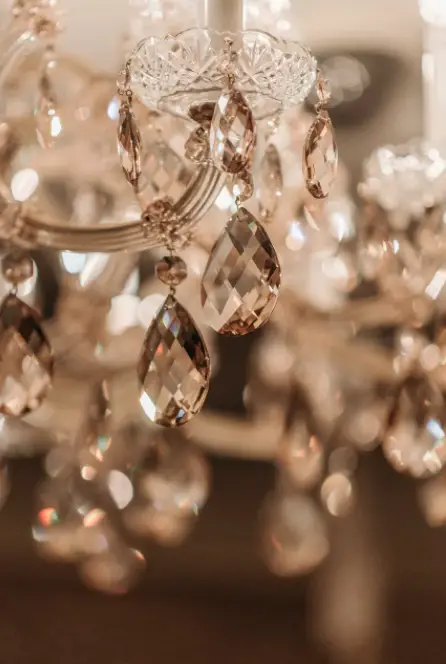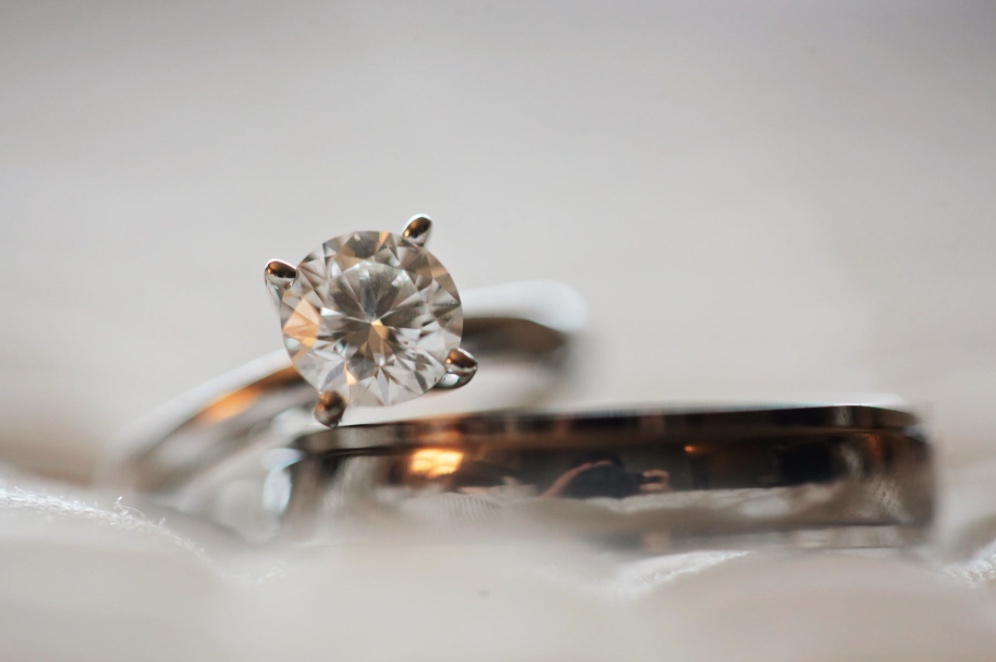Swarovski crystals are renowned worldwide for their brilliance, quality, and luxury appeal.
However, one question often arises: Why are Swarovski crystals more expensive than other crystals or glass products?
This article discusses the unique factors contributing to the high cost of Swarovski crystals, including materials, production processes, and the brand’s established reputation.
Let's get straight to the point
Renowned for their unmatched brilliance and luxury appeal, Swarovski crystals stand out for their premium pricing due to a combination of high-quality materials and a proprietary lead glass composition, which gives them a gemstone-like sparkle.
These crystals undergo an advanced cutting process with precision technology that creates up to 100 facets, enhancing their diamond-like refraction.
Crafted with a secret chemical formula, Swarovski’s crystals maintain durability, clarity, and colour consistency. The brand’s legacy since 1895, along with labour-intensive craftsmanship, strict quality standards, and exclusive fashion collaborations, further reinforces its value.
Limited production and exclusive retail control affect the crystals' status symbol appeal. With these meticulous processes, Swarovski crystals represent innovation and luxury, justifying their higher cost.
1. Exceptional Quality Of Materials

Swarovski crystals are made from a carefully selected blend of high-quality materials that enhance their clarity and brilliance.
- Lead Glass Composition: Swarovski crystals use a lead glass mixture containing approximately 32% lead oxide, which gives the crystals a high refractive index and makes them sparkle like natural gemstones.
- Purity Standards: Only quartz, sand, lead, and minerals of the highest purity are used to ensure each crystal’s transparency and brilliance.
- Impurity-Free Appearance: The purity of materials allows Swarovski crystals to remain clear and bubble-free, setting them apart from cheaper alternatives that may appear cloudy or contain imperfections.
This attention to material quality is one of the key reasons why Swarovski crystals are more costly than regular glass products.
2. Intricate Cutting Process
Another primary reason for Swarovski’s price tag is the complex cutting process each crystal undergoes, which enhances its sparkle and visual appeal.
- Advanced Cutting Technology: Swarovski uses proprietary machines equipped with advanced technology, including computer-aided designs (CAD), to cut each crystal to perfection.
- Precision Faceting: Each crystal is cut with up to 100 facets, allowing light to refract at different angles and creating stunning, diamond-like brilliance.
- 3D Simulation and Quality Control: The crystal’s cuts are simulated in 3D, optimised, and transferred into control algorithms before being implemented in production, ensuring each cut is precise and flawless.
These complex steps make Swarovski crystals significantly more labour-intensive than standard crystals, often with simpler, less precise cuts.
3. Swarovski’s Proprietary Chemical Formula
Swarovski crystals are crafted using a top-secret chemical formula known only to the company. This formula contributes to both the durability and unique sparkle of Swarovski products.
- Enhanced Durability: The formula gives Swarovski crystals added durability, making them more resistant to scratches and wear.
- Unique Colour and Clarity: The chemical formula is essential for achieving the clear, bubble-free appearance that Swarovski is famous for, as well as producing consistent and vibrant colours in coloured crystals.
- Chemical Coatings: Many Swarovski crystals, such as the Aurora Borealis (AB) coated crystals, are treated with a specialised coating to add a rainbow-like effect that reflects multiple colours.
The formula's proprietary nature ensures that only Swarovski can create crystals with such distinct clarity and colour consistency.
4. Long-Standing Legacy And Brand Reputation
Swarovski has been around since 1895 and has established a reputation for luxury and quality in the jewellery and fashion industries. The brand’s legacy contributes significantly to its price.
- Renowned Craftsmanship: Founded by Daniel Swarovski in Austria, the brand became known for its patented crystal-cutting machine, a breakthrough in the crystal industry.
- High Fashion Collaborations: Swarovski has collaborated with luxury fashion houses and renowned designers, solidifying its place in the high-end fashion world.
- Prestigious Brand Image: Owning Swarovski jewellery is seen as a status symbol, adding value to the brand beyond the physical product.
5. Labour-Intensive Production Process
The production process for Swarovski crystals is lengthy and labour-intensive, requiring high skill and attention to detail.
- Step-by-Step Creation:
- Material Selection: Each component—quartz, lead, and minerals—is carefully selected for purity.
- Precision Cutting: The crystal undergoes multiple cutting processes, where each cut is angled to maximise light refraction.
- Polishing and Quality Control: After cutting, each crystal is polished to perfection, ensuring it is smooth, clear, and reflective.
- Time-Consuming Quality Checks:
- Each crystal undergoes extensive quality checks for clarity, cut, and consistency, with any flawed crystals discarded.
- This meticulous quality assurance is time-consuming and drives up production costs, but it also ensures that every Swarovski crystal meets the brand’s high standards.
6. Proprietary Machinery And Technology
Swarovski’s patented machinery and technology set it apart from other crystal brands.
- Exclusive Cutting Equipment: Swarovski’s cutting machines are custom-designed to create the complex, multi-faceted crystals the brand is known for.
- Computerised Precision: Each facet on a Swarovski crystal is designed and positioned using sophisticated software to optimise light refraction.
- Costly Machinery: Swarovski’s production process involves highly advanced and costly technology, which contributes to each crystal's overall price.
Swarovski’s exclusive control over this machinery and technology helps ensure a level of precision and quality that competitors unmatch.
7. High Refraction Index For Brilliant Shine
A key feature of Swarovski crystals is their high refractive index, which allows them to reflect and refract light beautifully, creating a diamond-like sparkle.
- Lead Content: The 32% lead content gives Swarovski crystals a high refraction index comparable to diamonds and other precious gems.
- Multiple Facets: The intricate cutting process allows each crystal to bend light in various directions, resulting in brilliance and fire that mimics high-quality gemstones.
- Comparable to Gemstones: Swarovski crystals are often mistaken for precious stones due to their brilliance, even though they are made from glass.
8. Secret Chemical Composition And Patented Techniques
Swarovski’s chemical composition and manufacturing techniques are top-secret, ensuring competitors cannot easily replicate their crystals.
- Chemical Purity: The formula is designed to maintain a bubble-free, clear appearance with consistent colour and clarity across all products.
- Proprietary Coatings: Specialised coatings like AB coating, which produces a rainbow effect, are applied to some crystals, adding unique visual effects that increase their appeal.
- Exclusive Crafting Method: Only Swarovski possesses the recipe and process needed to produce these high-quality crystals, creating an exclusivity factor.
9. Strict Quality Control Standards
Each Swarovski crystal goes through a rigorous quality control process to ensure it meets uniform standards for brilliance and clarity.
- Zero Imperfections Policy: Swarovski has a zero-tolerance policy for imperfections, discarding any crystal that doesn’t meet its stringent criteria.
- Consistent Appearance: Each crystal is inspected for size, shape, and colour.
- Quality Assurance Procedures: The rigorous inspection and polishing processes ensure that each crystal is flawless and meets the brand’s standards.
10. Popularity And Demand In Fashion And Jewellery Markets
Swarovski has solidified its position as a high-end luxury brand in the fashion and jewellery markets. This demand drives the price up.
- Collaborations with Fashion Designers: Swarovski is frequently used in luxury fashion, with designers incorporating Swarovski crystals into their collections.
- Luxury Jewellery Market: Swarovski is a popular choice for wedding jewellery and other formal accessories, making it a staple in high-end jewellery stores worldwide.
- Increasing Demand for Customisation: Swarovski offers various crystal finishes and shapes, allowing for fashion and home décor customisation, further boosting its popularity.
11. Consistency And Uniformity In Every Crystal
Swarovski crystals are crafted to a standard of uniformity and consistency, rarely matched by other crystal brands.
- Exact Same Size and Shape: Each crystal is identical in size, shape, and clarity.
- Standardised Colour Intensity: Coloured Swarovski crystals have a consistent vibrancy, with each hue appearing uniform across products.
- Easier Authentication: Swarovski crystals' precision makes it easy to distinguish genuine crystals from counterfeits. For example, real Swarovski crystals are bubble-free, clear, and have sharp facets.
12. Limited Availability And Exclusivity

Unlike other brands that mass-produce crystals, Swarovski maintains an air of exclusivity by limiting its production and controlling distribution channels.
- Limited Production Sites: Swarovski crystals are produced exclusively in Austria and Siberia, ensuring quality control and scarcity.
- Control Over Retail Distribution: Swarovski products are only available through official retailers, making them more difficult to find and adding to their exclusivity.
- High Demand but Limited Supply: Due to limited production and distribution, Swarovski crystals often maintain high demand in the market, justifying their price.
13. Aesthetic Appeal And Recognisable Sparkle
Swarovski crystals are highly valued for their aesthetic appeal and unique sparkle, making them a premium choice for jewellery and decoration.
- Visual Appeal: Swarovski crystals' multifaceted design and high refractive index give them a distinct sparkle, which is often mistaken for diamonds.
- Dazzling Finishes: Finishes like the AB coating give the crystals a colourful, rainbow-like effect that adds depth and visual interest.
- Shine and Durability: Swarovski’s quality control ensures each crystal shines and is durable enough to withstand everyday wear.
Conclusion
Swarovski crystals stand out as a premium choice in jewellery and fashion due to their exceptional quality, precision craftsmanship, and legacy of luxury and exclusivity.
Swarovski's dedication to perfection ensures each crystal exhibits unmatched brilliance and clarity, from the use of high-quality materials and a top-secret chemical formula to intricate cutting techniques and rigorous quality control processes.
The brand’s recognisable sparkle, high demand, and limited availability reinforce its position as a symbol of sophistication and status.
Ultimately, Swarovski crystals are more than just decorative pieces; they result from a time-honoured tradition of excellence and innovation that justifies their higher cost and sustained prestige in the market.
Frequently Asked Questions About Swarovski
Yes, they are real. They are real lead glass. Swarovski crystals are non-precious lead glass meaning that the intrinsic value of the material is not very high. They do have a valuable brand name, however, which causes them to have higher prices compared to other crystal suppliers.
As compared to other glass jewellery, Swarovski jewellery is made of extremely high-quality crystal glass. The high-quality crystals come from a very uniform structure which offers the Swarovski crystals amazing clarity.
Swarovski jewellery can be said to be one of the favourite jewellery for jewellery lovers. With such beautiful jewellery, you are likely to wear it often. When you wear them every day, their clarity will drop faster, and they will become less clear and attractive than when you just bought them.
While the composition of gold-filled and sterling silver ring designs withstand daily wear-and-tear, Swarovski crystals are best kept away from water. Larger Swarovski crystal stones, coloured crystals, and crystals with surface effects and coatings are best removed before contact with water, including hand washing.

